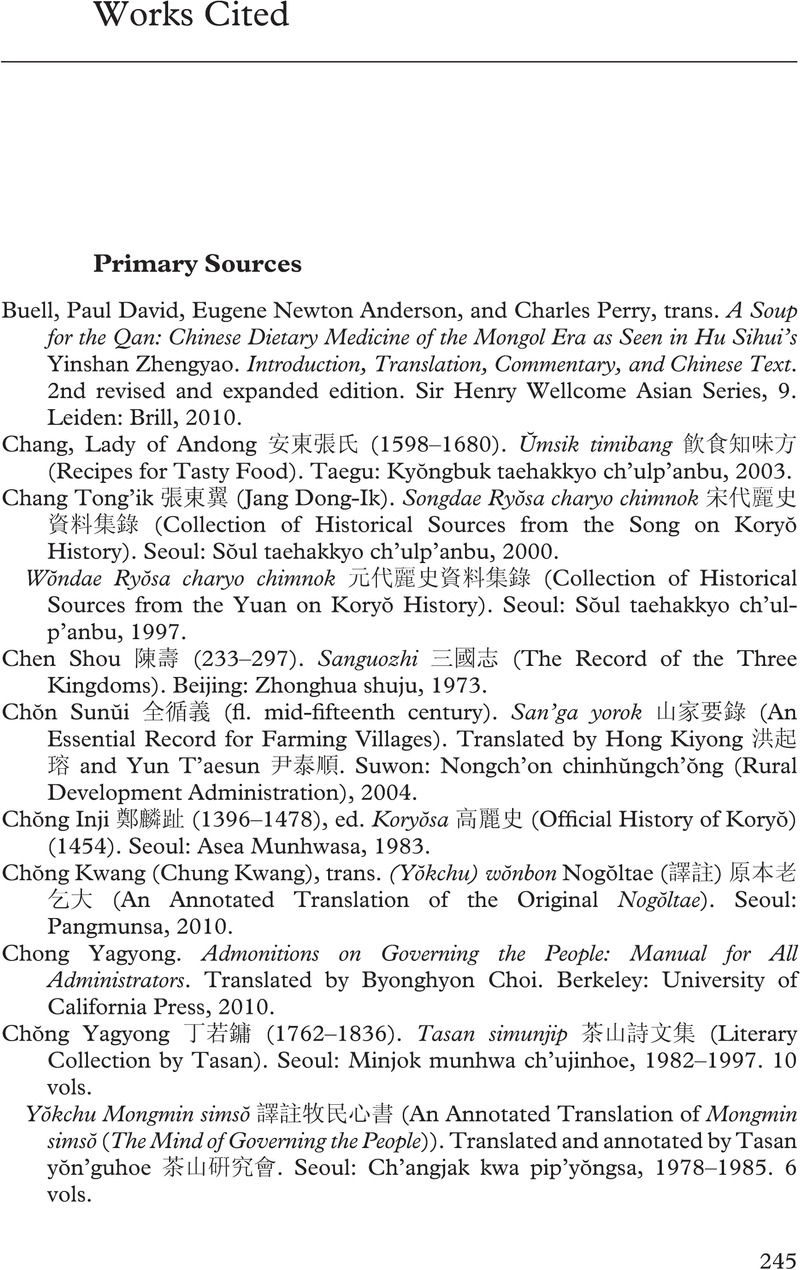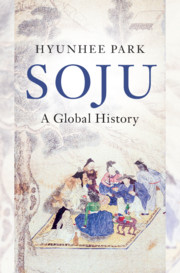Book contents
- Soju
- ASIAN CONNECTIONS
- Soju
- Copyright page
- Dedication
- Contents
- Maps
- Illustrations
- Acknowledgments
- Note on Transliteration and Other Conventions
- Introduction
- 1 Soju and Arak
- 2 The Mongols and the Rise of Soju in Koryŏ Korea
- 3 Contextualizing Soju
- 4 Distilling Soju at Court and Home in Chosŏn Korea
- 5 Challenges of Modernity
- 6 Alcohol Globalism
- Conclusion
- Works Cited
- Index
- Asian Connections
- References
Works Cited
Published online by Cambridge University Press: 21 January 2021
- Soju
- ASIAN CONNECTIONS
- Soju
- Copyright page
- Dedication
- Contents
- Maps
- Illustrations
- Acknowledgments
- Note on Transliteration and Other Conventions
- Introduction
- 1 Soju and Arak
- 2 The Mongols and the Rise of Soju in Koryŏ Korea
- 3 Contextualizing Soju
- 4 Distilling Soju at Court and Home in Chosŏn Korea
- 5 Challenges of Modernity
- 6 Alcohol Globalism
- Conclusion
- Works Cited
- Index
- Asian Connections
- References
Summary

- Type
- Chapter
- Information
- SojuA Global History, pp. 245 - 268Publisher: Cambridge University PressPrint publication year: 2021



